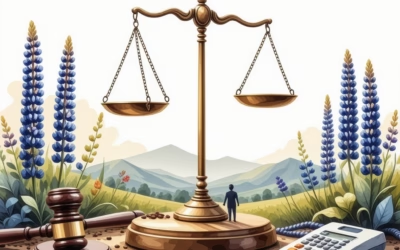Key Takeaways
- Access Essential Support: Government medication assistance programs offer vital resources to help individuals afford prescription costs, particularly for low-income households.
- Medicare Part D Extra Help: Eligible seniors can significantly reduce their medication expenses through the Medicare Part D Extra Help program, with costs as low as $1.45 for generics.
- State-Specific Programs: States like Washington and Michigan provide tailored prescription assistance programs to ensure residents can access necessary medications.
- Comprehensive Resources: Utilize online tools like NeedyMeds and RxAssist to find local medication assistance programs and patient assistance options.
- Eligibility Criteria: Understanding the income and medical condition requirements is crucial for accessing various medication assistance programs effectively.
- Emergency Support: The Emergency Prescription Assistance Program (EPAP) helps individuals in disaster areas obtain necessary medications and supplies without upfront costs.
In today’s challenging economic landscape, many individuals find themselves struggling to afford necessary medications. This comprehensive guide to government medication assistance programs aims to illuminate the various federal and state resources available to help alleviate the financial burden of prescription costs. From understanding the basics of federal assistance for prescriptions to exploring specific state programs like the Washington State Prescription Assistance Program and the Michigan Prescription Assistance Program, this article will provide valuable insights into how you can access the support you need. We will also delve into critical questions such as what medical conditions qualify for free prescriptions and discuss strategies for those wondering how to get help paying for medications. Whether you’re seeking help paying for prescriptions or looking for free medication assistance programs, this guide will equip you with the knowledge to navigate the complex landscape of medication assistance programs effectively.
What is the federal assistance for prescriptions?
The federal assistance for prescriptions primarily includes various medication assistance programs aimed at helping individuals manage their prescription drug costs. These programs are crucial for those who struggle to afford necessary medications, particularly low-income individuals and seniors. Understanding these programs can empower you to access the support you need for your health.
Overview of Government Medication Assistance Programs
Government medication assistance programs are designed to alleviate the financial burden of prescription medications. One of the most significant programs is the Medicare Part D Extra Help program, which provides essential support for seniors and individuals with disabilities. This program significantly reduces costs associated with Medicare Part D, making medications more affordable for eligible participants.
- Medicare Part D Extra Help Program: This program aids individuals with limited income and resources in managing their prescription drug costs. Eligible participants can receive assistance with premiums, deductibles, and copayments.
- Eligibility Criteria: To qualify for the Extra Help program, individuals must meet specific income and resource limits. As of 2023, the income limit is generally around $20,385 for individuals and $27,465 for couples, while resource limits are set at $15,510 for individuals and $30,950 for couples.
- Application Process: Individuals can apply for Extra Help at any time, either before or after enrolling in a Medicare Part D plan. Applications can be submitted online through the Social Security Administration (SSA) website, by phone, or in person at local SSA offices.
- Benefits of the Program: Participants may pay as little as $1.45 for generic drugs and $4.30 for brand-name drugs, depending on their income level. The program also eliminates the coverage gap, ensuring continuous support for necessary medications.
- Additional Resources: For more information, individuals can visit the official Medicare website or the SSA website for comprehensive details about eligibility, benefits, and the application process.
Importance of Medication Assistance Programs for Low-Income Individuals
Medication assistance programs play a vital role in ensuring that low-income individuals have access to necessary medications. These programs not only help reduce out-of-pocket costs but also improve health outcomes by ensuring that individuals can adhere to their prescribed treatment regimens. By participating in these assistance programs for medication, individuals can avoid the detrimental effects of skipping doses or foregoing medications due to cost.
Moreover, programs such as patient assistance programs and drug assistance programs provide additional avenues for financial help. These initiatives often work in conjunction with government programs to offer comprehensive support tailored to the needs of those struggling financially. Understanding how to get help paying for medications can significantly impact the quality of life for many individuals.

What is the Washington State Prescription Assistance Program?
The Washington State Prescription Assistance Program is designed to help residents access affordable medications. Here are the key components of the program:
- Eligibility: All residents of Washington State can participate, regardless of age or income level, ensuring that everyone has access to necessary medications.
- Benefits: The program provides significant discounts on both brand-name and generic medications, making it easier for individuals to afford their prescriptions.
- Coverage: The ArrayRx card, which is part of the program, is not insurance but serves as a valuable tool to bridge coverage gaps. It assists individuals who lack prescription drug coverage, face high deductibles, or need medications not covered by their insurance.
- Accessing the Card: Residents can obtain the ArrayRx card through the Washington State Health Care Authority website, which offers easy access to this resource.
- Prescription Drug Assistance Network (PDAN): This network is specifically aimed at helping low-income individuals and families navigate and manage patient assistance programs provided by pharmaceutical companies.
- Washington Drug Card: A free statewide initiative that offers savings of up to 80% on medications, including options for pet medications.
- BenefitsCheckUp: This free service provides information on programs available for over 1,450 brand-name and generic drugs, helping users identify potential savings.
- Medicine Assistance Tool: A resource that assists individuals in finding no-cost and discounted drug programs tailored to their needs.
- NeedyMeds: This organization helps users locate patient assistance programs for their medications, ensuring they receive the help they need.
- ParentHelp123: A program that supports Washington families in applying for health and food assistance programs online, as well as connecting them with local resources.
- Pharmaceutical Assistance Program: This initiative provides comprehensive lists of pharmaceutical assistance programs categorized by drug name, particularly beneficial for seniors.
- RxAssist: A valuable resource that offers information about free and low-cost medicine programs, helping individuals find affordable options for their prescriptions.
For more detailed information and resources, residents can visit the Washington State Health Care Authority website or consult with local healthcare providers.
Government Medication Assistance Program Near Me: Finding Local Resources
Finding local resources for government medication assistance programs can significantly ease the burden of prescription costs. Here are some effective strategies to locate these resources:
- Online Directories: Utilize online directories that list local assistance programs. Websites like NeedyMeds and RxAssist provide comprehensive databases of patient assistance programs available in your area.
- Community Health Centers: Reach out to community health centers, which often have information on local medication assistance programs and can help you navigate available resources.
- Local Pharmacies: Many pharmacies have staff trained to assist patients in finding medication assistance programs. They can guide you through the options available based on your specific needs.
- State Health Departments: Contact your state health department for information on government assistance for medication. They can provide details on state-specific programs and eligibility requirements.
By leveraging these resources, you can effectively find the support you need to manage your prescription costs.
Free Government Medication Assistance Program: State-Specific Options
Many states offer free government medication assistance programs tailored to meet the needs of their residents. Here are some options to consider:
- State Health Programs: Each state has unique programs designed to assist low-income individuals with medication costs. Research your state’s health department website for specific programs available in your area.
- Nonprofit Organizations: Numerous nonprofit organizations provide free medication assistance programs. Organizations like NeedyMeds and RxAssist can help connect you with these resources.
- Pharmaceutical Company Programs: Many pharmaceutical companies offer patient assistance programs that provide free or discounted medications to eligible individuals. Check with the manufacturer of your prescribed medication for available options.
- Local Charities: Local charities and community organizations often have programs in place to assist individuals with medication costs. Reach out to local charities to inquire about available assistance.
Exploring these state-specific options can help you access the free government medication assistance programs you need to manage your health effectively.
What is the Michigan Prescription Assistance Program?
The Michigan Prescription Assistance Program (MIDAP) is a vital resource designed to help Michigan residents access necessary medications. This program is particularly beneficial for individuals who lack prescription drug coverage, including those with high deductibles or those seeking savings on medications not covered by their insurance. MIDAP specifically targets individuals with HIV/AIDS who meet certain income and residency criteria, ensuring that those in need receive the support they require.
Senior Prescription Drug Assistance Program: Tailored Support for Seniors
For seniors in Michigan, the Senior Prescription Drug Assistance Program offers tailored support to help manage medication costs. This program is designed to assist older adults who may be on fixed incomes and struggle to afford their prescriptions. Key features include:
- Eligibility Criteria: Seniors aged 65 and older can apply for assistance, especially those who do not have adequate prescription coverage.
- Cost Savings: The program provides access to discounted medications and may cover some out-of-pocket costs associated with prescriptions.
- Comprehensive Resources: Participants can receive guidance on navigating other assistance programs, including Medicare and Medicaid, to maximize their benefits.
By utilizing the Senior Prescription Drug Assistance Program, seniors can find relief from the financial burden of medication costs, ensuring they can maintain their health and well-being.
Prescription Assistance for Seniors on Medicare: Navigating Available Resources
Seniors enrolled in Medicare may also benefit from various prescription assistance options. Understanding how to navigate these resources is crucial for managing healthcare costs effectively. Here are some key points:
- Medicare Part D: This program offers prescription drug coverage, but it’s essential to choose a plan that best fits individual medication needs and financial situations.
- Extra Help Program: Seniors with limited income may qualify for the Extra Help program, which can significantly reduce prescription costs and premiums.
- Local Resources: Community organizations and local health departments often provide additional support and information on available assistance programs, ensuring seniors can access the medications they need.
By exploring these options, seniors on Medicare can effectively manage their prescription costs and maintain their health without financial strain. For more information on the Michigan Prescription Assistance Program, residents can visit the Medicare assistance programs page or contact local health clinics for assistance.
How to Pay for Prescriptions with No Money?
If you are struggling to pay for your prescription medications, there are several financial assistance options available to help you manage these costs. Here are key resources to consider:
Programs to Help Pay for Medications: Exploring Available Options
There are various programs designed to assist individuals in affording their medications. These include:
- Government Programs:
- Medicaid: This state and federal program provides health coverage for low-income individuals, including prescription drug coverage. Eligibility varies by state.
- Medicare Part D: For those over 65 or with certain disabilities, Medicare offers prescription drug plans that can significantly reduce costs.
- Patient Assistance Programs (PAPs): Many pharmaceutical companies offer PAPs that provide free or low-cost medications to eligible individuals. Check the specific manufacturer’s website for details.
- Nonprofit Organizations:
- Organizations like the Partnership for Prescription Assistance and NeedyMeds help connect patients with programs that offer free or discounted medications. They provide resources to find assistance based on your specific needs.
- State Programs:
- Many states have their own programs to assist residents with prescription costs. These can include discount cards or state-funded assistance programs. Visit your state’s health department website for more information.
- Community Health Centers:
- Federally Qualified Health Centers (FQHCs) often provide medications at reduced costs based on income. They also offer sliding scale fees for services.
- Crowdfunding and Financial Aid:
- Platforms like GoFundMe can be used to raise funds for medical expenses, including prescriptions. Additionally, some charities and local organizations may offer financial aid for medical costs.
- Discount Cards and Coupons:
- Websites like GoodRx provide coupons that can significantly lower the cost of prescriptions at participating pharmacies. These are free to use and can be a quick solution.
- Consult Your Healthcare Provider:
- Speak with your doctor about your financial situation. They may be able to prescribe a more affordable medication or provide samples.
Help Paying for Prescriptions: Strategies for Financial Assistance
To effectively navigate the landscape of financial assistance for medications, consider the following strategies:
- Research Local Resources: Utilize online platforms and local health department resources to find government assistance for medication programs available in your area.
- Utilize Free Medication Assistance Programs: Explore free medication assistance programs that can provide immediate relief.
- Engage with Patient Assistance Programs: Look into patient assistance programs offered by pharmaceutical companies for additional support.
- Stay Informed: Regularly check for updates on assistance programs for medication that may become available.

What Medical Conditions Qualify for Free Prescriptions?
Understanding the eligibility criteria for medication assistance programs is crucial for those seeking help paying for prescriptions. Various medical conditions can qualify individuals for free prescriptions, ensuring they receive the necessary medications without financial burden. Here are some key conditions that typically qualify:
- Thyroid Disorders: Individuals diagnosed with specific thyroid conditions, such as hypothyroidism, may qualify for free prescriptions due to the need for ongoing medication management.
- Diabetes: Those with diabetes, particularly types 1 and 2, are eligible for free prescriptions, including patients who require insulin or other medications to manage their blood sugar levels effectively.
- Physical Disabilities: Individuals with ongoing physical disabilities that significantly impair their ability to leave home without assistance are eligible, as these conditions often require long-term care and support.
- Epilepsy: Patients diagnosed with epilepsy who require continuous anticonvulsive therapy qualify for free prescriptions, which is crucial for managing their condition and preventing seizures.
- Cancer: Patients undergoing treatment for cancer, including those receiving chemotherapy or radiotherapy, are also eligible for free prescriptions.
- Mental Health Conditions: Certain mental health disorders, such as severe depression or schizophrenia, may qualify individuals for free prescriptions, as ongoing medication is often necessary for management.
- Chronic Respiratory Diseases: Conditions like asthma and chronic obstructive pulmonary disease (COPD) can also qualify individuals for free prescriptions due to the need for regular medication.
For a comprehensive list of qualifying conditions and further details, individuals can refer to the official NHS website or consult the Gov.uk guidelines. These resources provide authoritative information on eligibility criteria and the application process for free prescriptions.
Eligibility Criteria for Medication Assistance Programs
To qualify for various medication assistance programs, applicants typically need to meet specific criteria, which may include:
- Proof of income level, often requiring documentation to demonstrate low-income status.
- Residency requirements, ensuring applicants are residents of the state or country offering the assistance.
- Documentation of the medical condition requiring medication, which may involve a doctor’s note or medical records.
- Enrollment in government programs, such as Medicaid or Medicare, which can enhance eligibility for additional assistance.
Understanding these criteria is essential for those asking, how can I get help paying for my medication? By exploring available government assistance for medication and assistance programs for medication, individuals can find the support they need.
What is the US Emergency Prescription Assistance Program?
The Emergency Prescription Assistance Program (EPAP) is a federal initiative designed to provide critical support for individuals affected by disasters. This program allows enrolled pharmacies to process claims for essential prescription medications, medical supplies, vaccinations, and certain types of medical equipment for eligible residents in federally designated disaster areas.
Prescription Medication Assistance Programs: Overview of Emergency Support
Key features of the EPAP include:
- Eligibility: Individuals must reside in a federally declared disaster area and meet specific criteria to qualify for assistance. This includes those who may have lost access to their medications due to the disaster.
- Coverage: EPAP covers a wide range of prescription medications, including those for chronic conditions, as well as necessary medical supplies and equipment. This ensures that individuals can maintain their health during emergencies.
- Pharmacy Enrollment: Pharmacies must enroll in the EPAP to process claims. This enrollment allows them to provide services to eligible patients without upfront costs, ensuring immediate access to necessary medications and supplies.
- Application Process: Eligible individuals can access the program through participating pharmacies, which will assist in the claims process. It is crucial for pharmacies to stay updated on the latest guidelines and procedures to facilitate smooth operations.
- Support Resources: For more information, individuals can visit the ASPR (Assistant Secretary for Preparedness and Response) website, which provides comprehensive details about the program and how to access services.
The EPAP plays a vital role in disaster response by ensuring that those affected can obtain necessary medications and supplies, thereby supporting public health during emergencies. For further details, you can refer to the ASPR’s official resources and guidelines.
Help to Pay for Prescription Drugs: Resources for Immediate Needs
In addition to the EPAP, there are various government assistance for medication programs available to help individuals manage their prescription costs. These programs include:
- Patient Assistance Programs: Many pharmaceutical companies offer patient assistance programs that provide free or discounted medications to eligible individuals.
- State-Specific Programs: Various states have their own assistance programs for medication, which can provide additional support tailored to local residents.
- Non-Profit Organizations: Organizations like NeedyMeds and RxAssist offer resources and guidance on accessing medication assistance.
By exploring these options, individuals can find the necessary support to help pay for prescription medications, ensuring they have access to the treatments they need.
Conclusion: How Can I Get Help Paying for My Medication?
Accessing the right government medication assistance program can significantly alleviate the financial burden of prescription costs. Various assistance programs for medication are available, designed to support individuals in need, particularly those with low income. These programs can help you find the necessary resources to manage your medication expenses effectively.
Summary of Available Assistance Programs
There are numerous free government medication assistance programs that cater to different needs. Some key options include:
- Patient Assistance Programs: Many pharmaceutical companies offer patient assistance programs that provide free or low-cost medications to eligible individuals.
- State-Specific Programs: Each state may have its own prescription assistance program tailored to local residents. For example, programs in Washington and Michigan offer unique support structures.
- Non-Profit Organizations: Organizations like NeedyMeds provide resources and information on how to access financial help for medications.
- Medicare and Medicaid: For seniors and low-income individuals, Medicare assistance programs can help cover prescription costs.
Encouragement to Explore Government Assistance for Medication Options
If you’re wondering how to get help paying for medications, it’s essential to explore all available options. Start by researching local resources and programs that can assist you. Websites like Gov Guider provide comprehensive guides to help you navigate these programs effectively. Remember, you are not alone in this journey, and there are numerous programs to help pay for medications that can provide the support you need.




